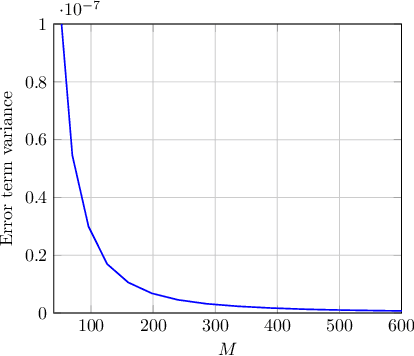Robin Jess Williams
Electromagnetic Based Communication Model for Dynamic Metasurface Antennas
Dec 22, 2022



Abstract:Dynamic metasurface antennas (DMAs) arise as a promising technology in the field of massive multiple-input multiple-output (mMIMO) systems, offering the possibility of integrating a large number of antennas in a limited -- and potentially large -- aperture while keeping the required number of radio-frequency (RF) chains under control. Although envisioned as practical realizations of mMIMO systems, DMAs represent a new paradigm in the design of signal processing techniques (such as beamforming) due to the constraints inherent to their physical implementation, for which no complete models are available yet. In this work, we propose a complete and electromagnetic-compliant narrowband communication model for a generic DMA based system. Specifically, the model accounts for: i) the wave propagation and reflections throughout the waveguides that feed the antenna elements, ii) the mutual coupling both through the air and the waveguides, and iii) the insertion losses. Also, we integrate the electromagnetic model in the conventional digital communication model, providing a complete and useful framework to design and characterize the performance of these systems. Finally, the accuracy of the model is verified through full-wave simulations.
Performance Evaluation of Dynamic Metasurface Antennas: Impact of Insertion Losses and Coupling
Jun 27, 2022



Abstract:This paper evaluates the performance of multi-user massive multiple-input multiple-output (MIMO) systems in which the base station is equipped with a dynamic metasurface antenna (DMA). Due to the physical implementation of DMAs, conventional models widely-used in MIMO are no longer valid, and electromagnetic phenomena such as mutual coupling, insertion losses and reflections inside the waveguides need to be considered. Hence, starting from a recently proposed electromagnetic model for DMAs, we formulate a zero-forcing optimization problem, yielding an unconstrained objective function with known gradient. The performance is compared with that of full-digital and hybrid massive MIMO, focusing on the impact of insertion losses and mutual coupling.
A Primer on Large Intelligent Surface for Wireless Sensing in an Industrial Setting
Jun 11, 2020



Abstract:One of the beyond-5G developments that is often highlighted is the integration of wireless communication and radio sensing. This paper addresses the potential of communication-sensing integration of Large Intelligent Surfaces (LIS) in an exemplary Industry 4.0 scenario. Besides the potential for high throughput and efficient multiplexing of wireless links, a LIS can offer a high-resolution rendering of the propagation environment. This is because, in an indoor setting, it can be placed in proximity to the sensed phenomena, while the high resolution is offered by densely spaced tiny antennas deployed over a large area. By treating a LIS as a radio image of the environment, we develop sensing techniques that leverage the tools of image processing and computer vision combined with machine learning. We test these methods for a scenario where we need to detect whether an industrial robot deviates from a predefined route. The results show that the LIS-based sensing offers high precision and has a high application potential in indoor industrial environments.
 Add to Chrome
Add to Chrome Add to Firefox
Add to Firefox Add to Edge
Add to Edge